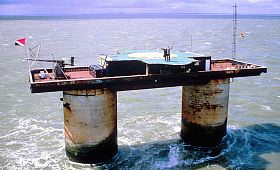 THE WEB OF COKAYNGE; CANDLE AND BELL
THE WEB OF COKAYNGE; CANDLE AND BELL -
Dain Oh (2008)
http://thewebofcokaygne.info
Dain Oh (a current student in the
Film, Video & New Media department at
The School of the Art Institute of Chicago whois also now studying with Media Art Histories bloggers
Nina Wenhart and
myself) is curating a screening program which is influenced by and reflects creatively on Media Art Histories. The program, called
THE WEB OF COKAYNGE; CANDLE AND BELL looks at the file format of the (online) Animated GIF through the lens of (early) cinema in order to artistically "reflect the history of the moving image". This screening program takes place on Sunday December 7th, 5 pm at the Nightingale in Chicago. The full description of the event and artists included follows below. -
jonCates
"THE WEB OF COKAYNGE; CANDLE AND BELL is an experiment that seeks to place curatorial process in the same realm as art. Through particular selection of work WoC mimics the conventions and histories of cinema as a Modernist medium while at the same time epitomizing the information society by working as a decentralized and interactive database. WoC displays different permutations of the moving image in relation to file formats, search queries and methods of artists and non-artists working with the medium of the Internet.
The Web of Cokaygne; Candle and Bell is a three part screening. In a traditional sense it maintains a beginning, a middle and an end. The first section is 0P3NFR4M3W0RK, an open DIY digital art exhibition initiated by Jon Satrom, instantiated by Dain Oh for the Web of Cokaygne; Candle and Bell and previously at (A) r4WB1t5 micro.Fest (initiated by jonCates and jon.satrom). The second portion is 787 Cliparts, by Oliver Laric. A video in which he displays hand-selected clip art that he has found on the Internet in a manner that suggest continuity in motion and the persistence of vision. The third and final section of WoC is a selection of animated GIFs by both artists and non-artists working with the Internet. The artists include Petra Cortright, Olia Lialina, Guthrie Lonergan, Tom Moody, Jon Satrom and Paul Slocum. The selected GIF's are important examples to reflect the history of the moving image. Examples are gif versions of: a goat found on a bowl from Iran's Burnt City, Muybridge's horse, then moving to commercial cartoons, video games and finally, new media and www gif's. The screening will be executed in real time and accompanied by a live piano performance.
The screening is on the 7th of December, 5 pm @ the Nightingale in Chicago." - Dain Oh








